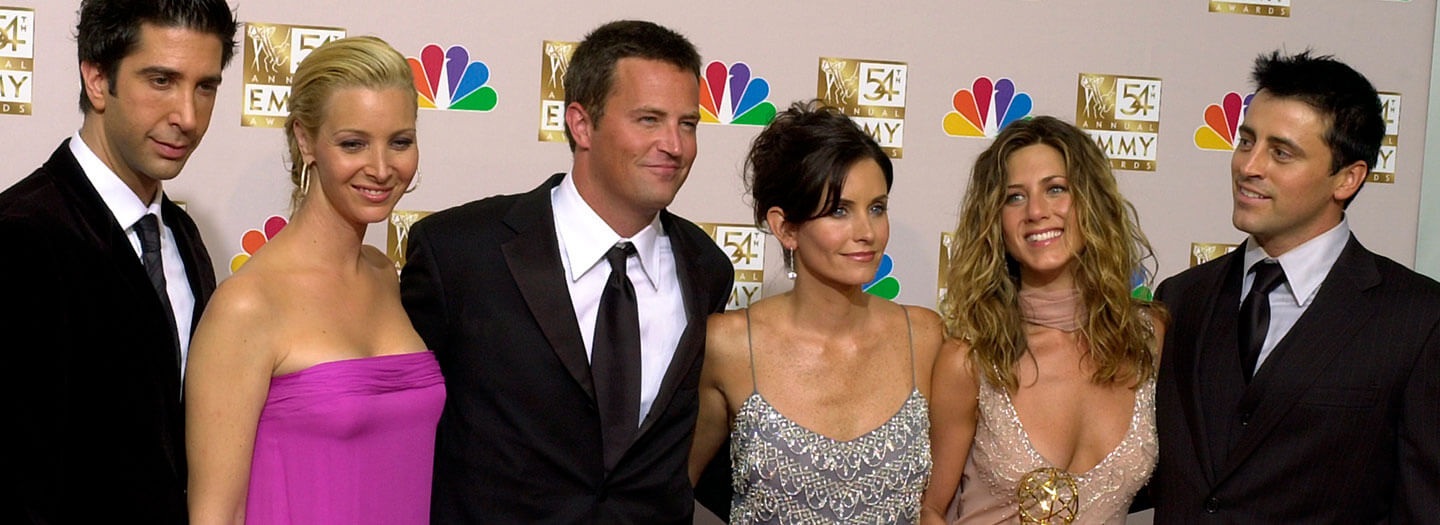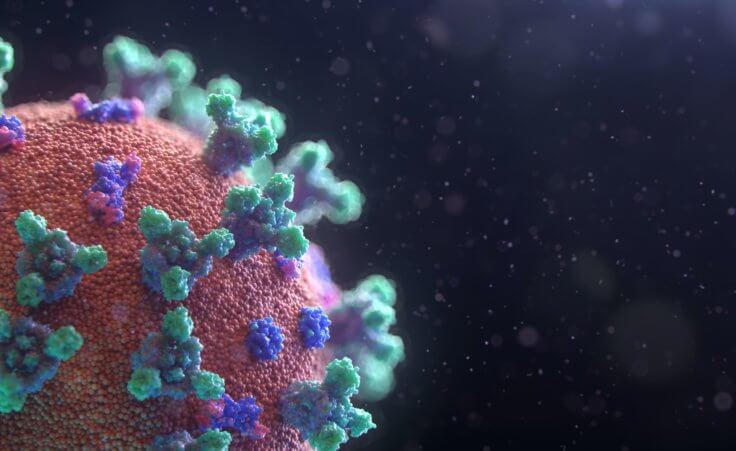
FILE - This Sept. 22, 2002 file photo shows "Friends," castmembers, from left, David Schwimmer, Lisa Kudrow, Matthew Perry, Courteney Cox Arquette, Jennifer Aniston and Matt LeBlanc after the show won outstanding comedy series at the 54th Annual Primetime Emmy Awards in Los Angeles. (AP Photo/Reed Saxon, File)
The sitcom Friends aired from 1994 to 2004. Its finale was watched by 52.5 million American viewers, making it the fifth-most watched series finale in the history of television and the most-watched episode of the 2000s.
The cast has reunited in a special now streaming on HBO Max. They are making news today after revealing that the real-life Ross and Rachel (played by David Schwimmer and Jennifer Aniston) nearly had a real-life romantic relationship that would have imitated their relationship on the show.
“The first season, I had a major crush on Jen,” Schwimmer says. “We were both crushing hard on each other.” Aniston agreed. However, as Schwimmer explained, “It was two ships passing, because one of us was always in a relationship. We never crossed that boundary—we respected it.”
The show was so popular in large part because it seemed so true-to-life for a generation of young adults. Hearing that the adults nearly did in their real lives what they did in their pretend lives apparently adds to the allure.
Psychologist Carl Rogers taught that our personality is composed of the Real Self (who we actually are) and the Ideal Self (who we want to be). Like actors on a stage, many of us spend our lives trying to convince others that our Ideal Self is our Real Self.
However, we know the truth.
How I found my favorite painting
The Russian city of St. Petersburg was founded on this day in 1703. It is known for its climate, lying only about seven degrees south of the Arctic Circle. My first time there was during an October; it was already snowing. From June 11 to July 2, daylight extends to nearly nineteen hours, a phenomenon known as “White Nights.”
The city was the capital of the Russian Empire for two centuries (1712–1918) and was fiercely defended against the Germans in World War II. Its bridges and natural river canals have earned it the nickname “Venice of the North.”
I have been privileged to visit several times. My favorite place in this magnificent city is the Hermitage. Founded in 1764 by the empress Catherine the Great, this astounding museum holds more than three million items, including the largest collection of paintings in the world.
One of these paintings is the reason I am writing about the city and museum today.
Return of the Prodigal Son was painted by Rembrandt in 1668, just months before his death. Depicting the return of the prodigal to his father (Luke 15:11–32), it is a massive painting, measuring 8.5 feet tall by 6.6 feet wide. Appropriately, it occupies its own wall in the museum.
The first time I saw it, I was stunned. Rembrandt captures you instantly, bringing you into the lifelike scene. The prodigal is emaciated and desperate, clothed in tattered rags. His elderly father bends over his desperate son while embracing him with both arms. Meanwhile, the older brother stands aloof to the side, towering over his younger brother in judgment.
I had read Henri Nouwen’s masterful The Return of the Prodigal Son: A Story of Homecoming before I saw the painting on which the book was based. Nouwen’s insights regarding God’s unconditional grace and our need to love ourselves as he does had been powerful in my life. Standing before the massive painting that he brought to theological life was deeply moving.
I purchased a print of the painting in the Hermitage gift shop that day; it has become my favorite painting and hangs in my study to this day.
Two steps from “friends” to family
Jesus’ parable, depicted so powerfully by Rembrandt and brought to life by Nouwen, calls us to make two life-changing decisions today. They will move us from a world of “friends” as depicted on sitcoms and popular culture to a world of family, now and forever.
One: See yourself as God sees you.
We live in a prodigal culture that is far from the Father’s house and will. We measure ourselves and others by the three P’s: performance, possessions, and popularity. But with all three, enough is never enough. There is always something more. And we are always pretending that we are more than we are.
By contrast, God knows every sin you have ever committed and every sin you will ever commit, but he loves you anyway. Unconditionally and passionately. In fact, he chose to watch his Son suffer and die so you could live eternally (Romans 5:8). Now he invites you to see yourself as he does: someone who is loved unconditionally and passionately.
Two: See everyone else as God sees them.
Your Father loves the next person you meet just as much as he loves you. Now he is calling you to join him (cf. Galatians 3:28). Imagine the impact if every Christian would love others as they are, even and especially those who disagree with our beliefs and oppose our faith. Imagine the impact if we were known more for who we are than for who we are not. Imagine the impact if the people you meet today sensed God’s love in your love and were drawn to your Lord as their Father.
“Love” is the first “fruit of the Spirit” (Galatians 5:22). If we ask God to help us receive his love for us and make real his love through us, he will be delighted to answer our prayer.
Why not today?











